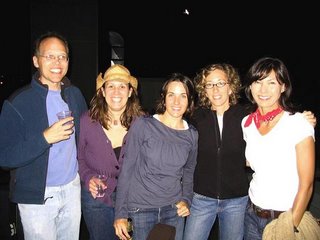One of the unique features of the Pottery Northwest Studio is that it has 2 operational soda kilns fueled by gas. What is a soda kiln? A soda kiln is a kiln that is very similar to a standard kiln; however, it has several access points where you 'spray' the soda mixture into the kiln. What is a soda firing?
Soda firing is an atmospheric firing that produces flashes of color, maybe a textured orange peel surface, and reacts in a variety of ways with different slips, glazes and clay bodies. The “soda” in soda firing is typically a combination of baking soda and soda ash. The soda mixture is introduced into the kiln near the end of the firing, once the kiln has reached a certain temperature. The soda vaporizes and is carried on the flame throughout the kiln. Wherever the flame travels, the soda travels and reacts with the pieces in the kiln to create a glazed or flashed surface. For this reason, it is common to leave some part of your pottery unglazed.
In our independent study class I would like to explore:
- the effects of soda firing on different clay bodies, e.g, shop soda clay, autio, etc
- the effects of location of pieces in the kiln with respect to the spray holes
- the effects of slips, glaze, terra sigilatta in a soda fire, perhaps creating specific slips with a result in mind, e.g., copper slip
- the affects of atmosphere in clay bodies, e.g. amount of soda and oxygen
We have read Gail Nichols article from Ceramics Monthly wondering if we could apply some of her ideas to our firings this summer. Time will tell.















